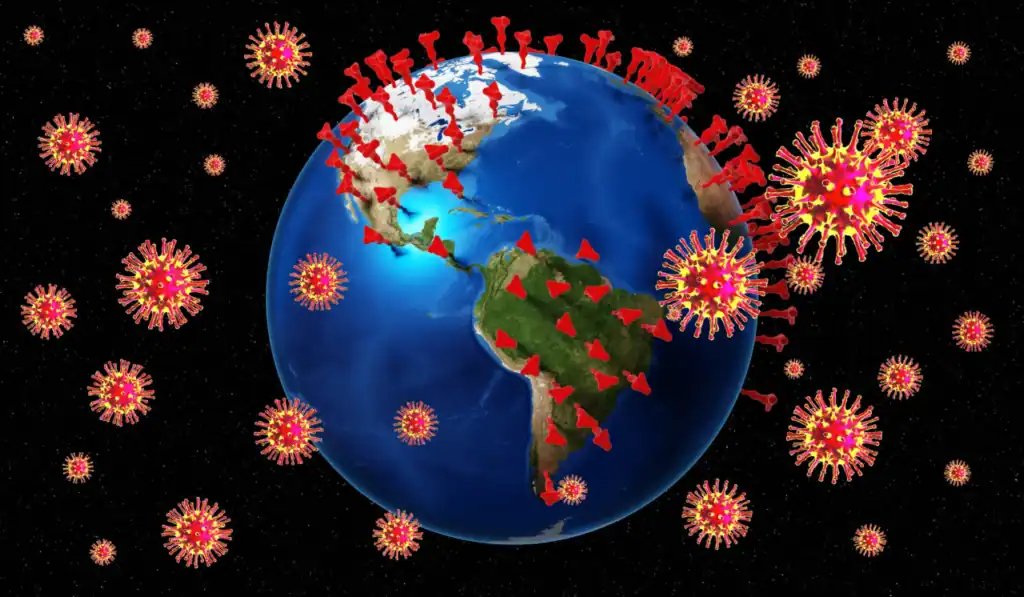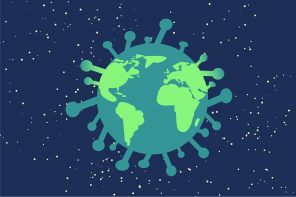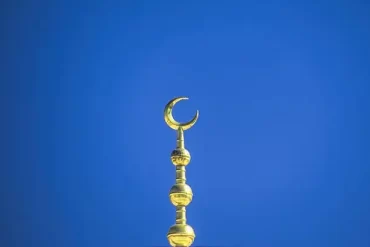Although people expect a return to normal life in the near future thanks to the rollout of Covid-19 vaccines in some parts of the world, many scholars and scientists argue that the pandemic could have far-reaching and recurrent impacts on global health and beyond.
A number of experts believe that the coronavirus pandemic will eventually undergo a transition to become an endemic, such as the seasonal flu.
However, Maria Van Kerkhove, the World Health Organization’s (WHO) leading expert on Covid-19, indicated that we could hardly expect to be out of the acute phase of the pandemic anytime soon.
The recently released US intelligence agencies’ Annual Threat Assessment also suggests that Covid-19 shall continue to pose a threat to the global population until widespread vaccination is initiated.
Besides, the report brings to attention the political, economic and security backlashes of the pandemic, which will ripple through the world for years to come.
In fact, we are already observing a complex political ambience amid widespread vaccine demand and global struggles to ensure equitable access to vaccinations. In turn, these have triggered the states to participate in “vaccine diplomacy”.
Vaccine diplomacy, although a recently coined term, is something almost as old as vaccines themselves.
The term is primarily used to indicate the use of vaccines to advance a country’s diplomatic relations with others and create greater influence over them. It may also be defined as an art of the recipient countries in acquiring vaccines from producer countries.
In both cases, the ultimate objective is to achieve a country’s specific foreign policy objective, which are basically derived from its domestic needs but revolve around the issue of vaccines at the same time.
However, the Covid-19 pandemic not only revived vaccine diplomacy, but also exhibited how diplomacy might take different forms in a global public health emergency.
Just months after SARS-CoV-2 started spreading from the Wuhan province of China in December, 2019, the disease turned into a catastrophic global pandemic that affects all states and regions, causing the deaths of almost three-and-a-half million people so far.
Initially, most countries were caught by surprise and were completely unprepared to deal with the invisible enemy.
By the time they started to take initiatives, it was already too late for many.
In the initial months, various countries struggled to acquire testing kits, personal protective equipment (PPE), disinfectants, respirators, ventilators, and other medical equipment.
During this tough time, some states stood by others by providing these required instruments.
For instance, in February 2020, several EU member countries — France, Germany, Italy, Latvia, Estonia, Austria, Czech Republic, Hungary and Slovenia — provided 56 tonnes of medical equipment to China via the EU Civil Protection Mechanism to tackle Covid-19.
Similarly, in April the same year, China donated two million surgical masks, 200,000 N95 masks and 50,000 testing kits to the EU, which was distributed to Italy.
China also supported its South and Southeast Asian neighbours with emergency medical supplies during the initial months of the coronavirus outbreak [Table-1 shows China’s overall support in 2020].
The case, nevertheless, was different with India as China got engaged with the country in deadly border skirmishes near the disputed Pangong Lake in Ladakh and along the Line of Actual Control (LAC) since May 2020.
It is often argued that China’s use of hard power amid the devastating pandemic was nothing but an interesting diplomatic move to distract global attention from its alleged involvement in developing the novel coronavirus at research labs in Wuhan.
Table-1: China’s global engagement to fight Covid-19 pandemic during 2020
| Hardware Supply | Export of protective materials to 200 countries and regions which includes:
|
| Financial Support |
|
| Capacity Building |
|
Source: Song, W. China’s global engagement to fight the novel coronavirus pandemic. glob health res policy 5, 44 (2020). https://doi.org/10.1186/s41256-020-00172-1
China has been a major power in the manufacturing of day-to-day medical equipment, producing about half of the world’s protective masks even before the pandemic began.
However, with the global coronavirus outbreak, Chinese companies extensively increased their production of protective gears, testing kits and medical equipment while other factories retooled and many new companies sprang up.
Huge production capacities enabled China to initially provide donations of medical supplies to many countries around the world, starting from the US and EU to states in the global South. Eventually, China became the main source of imports for them.
These donations went through both track-1 and track-2 channels as Chinese e-commerce titan Alibaba, telecom giant Huawei, smartphone manufacturer Oppo, Xiaomi and other tech-industries provided protective gears and medical instruments throughout the world.
For instance, Asia’s richest man Jack Ma donated 500,000 testing kits and one million facemasks to the US through his charity foundation and Alibaba despite a shortage of lab materials in the country in March 2020.
In sum, the Chinese philanthropic businessman and his company donated over 200 million units of PPE, testing kits and ventilators to over 150 countries and regions around the world.
Among the South Asian nations, Bangladesh received 30,000 Covid-19 testing reagents and 300,000 facemasks, while India and six other countries received 1.7 million face masks, 165,000 testing kits along with protective clothing, ventilators and forehead thermometers.
These efforts helped to uphold China’s global image, which was facing severe controversy after repeated international allegations of delaying the disclosure of the source of the novel coronavirus.
In early 2020, when scientists began to seek vaccines for the SARS-CoV-2, it was very much uncertain when the world would be able to get an effective one.
By December 2020, a number of developers came out with excellent results from large trials of their vaccines. This was possible because researchers had been working on related coronaviruses (SARS and MERS) for years and some had been trying to develop vaccines as well.
So far, 27 vaccines are in Phase-3, four of which have got approvals from the US Food and Drug Administration (FDA), European Medicines Agency (EMA) and WHO.
These are Pfizer/BioNTech, Moderna, Oxford/AstraZeneca and Janssen (Johnson & Johnson). However, a total 6 vaccines have gotten approval from the WHO under its Emergency Use Listing Procedure.
In practice, among the 14 vaccines which are currently being used in different states and regions, the Oxford/AstraZeneca vaccine is the most widely used (also the cheapest vaccine), followed by Pfizer/BioNTech and Chinese Sinopharm [see Chart-1].
According to the latest BBC report, so far more than 1.8 billion doses of coronavirus vaccines have been administered in at least 190 countries with China topping the chart with about 588 million doses, followed by the US and India with 291 million and 201 million doses respectively [see Map-1 for global vaccination scenario].
Most of the low-income countries are lagging far behind in their vaccination drive as they are mainly relying on shipments from Covax, a scheme led by Gavi, the Vaccine Alliance, along with the WHO and Coalition for Epidemic Preparedness Innovations (CEPI).
In the face of increasing global demand for vaccines and conservative measures in stockpiling vaccines for national use, which some scholars define as “vaccine nationalism”, Russian vaccine Sputnik V and Chinese vaccines Sinopharm and Sinovac are gaining demand.
People frustrated by delays in Europe are travelling to Russia for early shots (popularly coined as vaccine tourism) despite huge propaganda regarding its efficacy.
Countries once reluctant and less confident to use Chinese vaccines are also increasingly rallying to order “made in China” vaccines and accordingly using their diplomatic means to acquire them quicker.
This has been the scenario after the recent waves of coronavirus that severely affected South Africa, Brazil, and India in particular.
The case of Bangladesh, in this regard, is an interesting one to study.
Earlier in November 2020, given its warm diplomatic relations with India, Bangladesh signed a deal with the country to purchase 30 million doses of the Oxford/AstraZeneca vaccine manufactured by the Serum Institute of India (SII), which was supposed to be delivered between January-June 2021.
On top of that, India gifted 3.3 million doses of the vaccine to mark Bangladesh’s 50th anniversary of independence.
India has also been successful in its vaccine diplomacy in providing millions of doses (both as donations and on a commercial basis) to its other neighbours, notably Myanmar, Nepal, Bhutan, Sri Lanka, Afghanistan and Maldives.
The country, however, failed to prove its position against vaccine nationalism after the recent coronavirus scramble. As the Covid-19 infection rate and death toll significantly increased in India, the central government banned all vaccine exports.
Bangladesh had managed to get only seven million doses in two installments till then. The vaccines Bangladesh received from the SII enabled the South Asian nation with a population of 170 million to provide double doses to only about 3.9 million people (around 2% of its total population).
The country eventually had to stop new vaccine registrations as it was almost running out of shots even before covering about 1.5 million people who were due to receive their second dose.
In such a dire situation, Bangladesh’s diplomatic venture failed to get enough shipments from India to at least complete the remaining second doses.
The country also pledged for Oxford/AstraZeneca vaccines from the USA, UK, and Canada, but have not succeeded yet.
Lately, Bangladesh decided to opt for both Sputnik V and Sinopharm vaccines and gave emergency use authorization to both shots in late April 2021.
Interestingly, when China showed its interest in late 2020 to begin phase-3 trials of its Sinovac vaccine in Bangladesh, the country rejected the proposal.
At that time, China blamed India for the rejection. Moreover, Covax, which is trying to ensure equitable access to a coronavirus vaccine for all states, earlier promised to provide 68 million doses of vaccines to Bangladesh within this year, including around 12.7 million doses within June.
Unfortunately, no shipment from Covax has arrived yet. Meanwhile, on May 12, Bangladesh received 0.5 million doses of the Sinopharm vaccine as a gift from the Chinese government, which has pledged to donate another 0.6 million doses to Bangladesh to administer the second shot.
Bangladesh, as a result, is preparing to buy 15 million doses of the Sinopharm vaccine from China that would arrive in three equal shipments between June-August 2021.
It is reported that the price of each dose of vaccine will cost around $10 compared to $6.5 per dose of the Oxford/AstraZeneca vaccine.
Additionally, Bangladesh has agreed in principle on local co-production of the Russian Sputnik V vaccine, while it is also negotiating with Russia to commercially buy the shots at a competitive price to cater to the country’s immediate demand.
The case of Bangladesh, which is almost the same for Nepal and Sri Lanka, clearly shows that a recipient country under desperate need for vaccines also resorts to its diplomatic means, which forms a part of present-day vaccine diplomacy.
Countries never witnessed such a global scale pandemic before, rather they suffered from epidemics for recurring years. In dealing with the epidemics, vaccine recipient states mostly struggled to administer the process efficiently despite competing with other recipient states to acquire inoculations.
This time the competition, in fact, is too harsh to grab vaccines quickly and at the same time administer it professionally to get rid of the ever-deadly virus.
Most importantly, the Covid-19 pandemic has pushed certain states so hard that traditional strategic calculations and rivalry have often been blurred in the face of acute demand for vaccines.
Diplomacy is not only meant for making warm political relations with other states or keeping states under a sphere of influence, rather it is also about making money.
No doubt that China has been the top beneficiary in Covid-related businesses around the world. Even its sales of digital devices increased a lot as the world started working virtually during the pandemic.
With the highest vaccine production capacity, China is also expected to dominate the global Covid-19 vaccine economy in the coming days.
It is expected that the country will utilise not only the Covax platform, but also create a regional platform as it aims to develop its presence in the South Asian region.
Lately, by administering 100 million shots in only five days to reach above 600 million doses of vaccines administered, China has proved its capacity.
So far, China has sold about 732 million doses of vaccines to 93 states and regions of the world, among which 256 million doses have already been delivered and another 22 million doses were donated.
The following map [Map-2] shows that most of the Chinese vaccines went to the Asia-Pacific and Latin America regions, and the recipients being low and middle-income countries.
This also indicates China’s emergence as a hegemon who earlier declared coronavirus vaccine a “global public good” and has been actively working with the WHO to ensure equitable distribution around the world.
The US, a country still admired for its hegemonic role, has been very much conservative in sharing vaccines in spite of its huge production capacity being second only to China.
Earlier in May 2020, US President Donald Trump cut ties with the WHO, leading to much uncertainty amid the global pandemic as the US had been a major funder of the organisation.
Although newly elected US President Joe Biden walked back the plan of withdrawal, the administration concentrated more on the national level rather than play a global leadership role.
So far, the US has shared over 4 million doses of the Oxford/AstraZeneca vaccine with Canada and Mexico and announced it would share another 60 million doses. It should be noted that the Oxford/AstraZeneca vaccine is not authorized for use in the US yet.
The country also recently declared that it would donate an additional 20 million doses of the Pfizer, Moderna, or Johnson & Johnson vaccines. Compared to the Chinese pledge for jabs, the number is very low and supposed to be delivered mostly to Europe.
On the other hand, Russia has attracted many lower-income countries with its low-cost Sputnik V vaccine which can be stored at regular fridge temperatures unlike other jabs.
Moreover, the high efficacy (91.6 per cent) of Sputnik V coupled with the delay in vaccine rollouts across Europe have divided the EU on whether to give access to the Russian jabs.
Although Russia has sold thousands of Covid-19 vaccines to Latin American and European countries, it is struggling to maintain timely shipments and is planning for co-production with South Korea, Turkey and others.
Although India was in its priority list, the recent devastating situation dragged Russia back from the country that has the world’s fourth largest vaccine production capacity.
Finally, it may be concluded that the future of the Covid-19 pandemic will partly depend on the ongoing evolution of the SARS-CoV-2 virus, on citizens’ behaviour, and on governments’ strategy in responding to the pandemic.
However, it will be partly decided by the diplomatic successes of the countries situated at both the Covid-19 vaccine receiving and supplying ends.
The evolving diplomatic interplay around immunization will ultimately come off at the multilateral platform and might also take alternative international or regional spaces until states adapt with the situation during the course of time, if not sooner.
The author is an associate professor of the department of international relations at the University of Dhaka.








